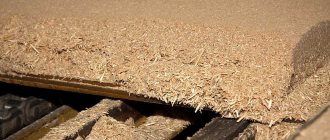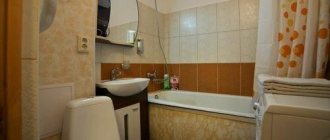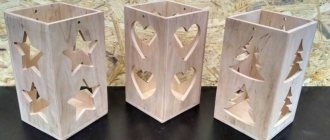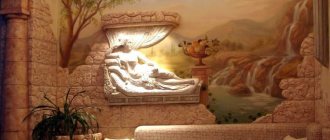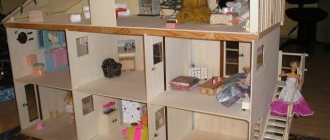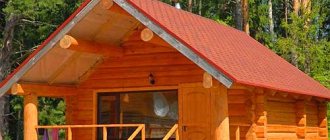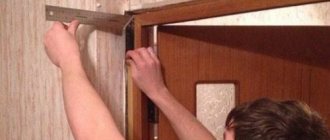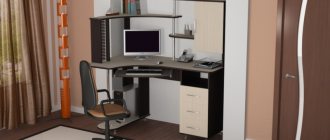Plywood is a material made from many natural wood layers that are glued together using a press. When carrying out various repair work, depending on the application, the most important role is played by the size and thickness of the plywood sheet. The production of modern products is also carried out taking into account the required external and functional features. Let's figure out what purpose the different sizes are used for.
Table
The most common sheet sizes
To accurately calculate the required amount of material, you should know the standard size of a plywood sheet. The sheet of material is:
- square;
- rectangular.
The most common sizes are the following (values are indicated in mm): 1525x1525, 2440x1220, 2500x1250, 3000x1500, 3050x1525.
Knowing the standard size, you can calculate the amount of material required for the work, as well as determine the cost estimate.
The dimensions and quality of plywood produced in Russia are regulated by GOST 3919-96, which has 2 editions - GOST 3916.1-96, GOST 3916.2-96. The first relates to the regulation of the quality of products made from coniferous wood, and the other, accordingly, relates to deciduous varieties.
Plywood layer and thickness
The characteristics of the sheet product depend on the production technology.
The structure of the slab includes a certain number of segments located in different directions relative to each other. Each layer of veneer is glued using a composition that determines the performance properties of the product. The technology for applying the binder solution may be different. The main difference between plywood and other wood-based materials is the layering. This feature is clearly visible at the edges. For the manufacture of slabs, veneer with a thickness of 1 to 1.6 mm is used; the number of layers determines the properties of the product. According to GOSTs 3916.1-96 and 3916.2-96, developed for deciduous and coniferous wood, there is a direct relationship between layers and standard thickness sizes.
Changes in indicators are allowed, but subject to maintaining the basic characteristics of the product. It is taken into account that for sanded and unsanded panels different deviations from the specified size are allowed.
On a note! Three-layer options have a minimum number of gluings. Although the number of layers is most often odd, there are exceptions. For example, slabs made from 4 layers of veneer have standard parameters.
Due to the existing gradation, sometimes there is a problem with determining how many sheets are in a factory pack:
- FC (1525 x 1525 mm). The number of slabs in a pallet ranges from 22 (18 mm) to 130 (3 mm) pieces.
The number of parts in 1 m3 will vary depending on the size.
Calculation of FSF products with dimensions 122 x 244 cm: with a thickness of 4 mm, the number of plates will be 84 pcs., and with 6 mm – 56 pcs. Single-layer plywood consists of one layer of ordinary veneer. The thickness of the cut may vary depending on the application and manufacturing method.
Various types of plywood
The most common types are FC, FSF, and laminated. They differ in moisture resistance, top sheet coating and type of glue.
What size and thickness of products are best to use for floor finishing? Square panels 1525x1525 are best suited; depending on the layout, you can choose a material of a different length and width.
For the floor, it is best to use a moisture-resistant material with a thickness of 12 to 20; you can lay two layers of boards 10 mm thick in a checkerboard pattern. It will provide a more uniform surface of the future floor, as well as its strength.
In this case, it will be easier to lay them out, cutting and sawing will be much easier. Additionally, thinner sheets are easier to move.
For a very flat floor, one layer of 10 mm is enough.
There is also thinner FSF plywood, the thickness of which is only 8 mm. The most popular sizes of such products made from hardwood are 1525x1525, 2440x1220 mm. Coniferous plywood sheets with a thickness of 8 are: 2500x1250 and 2440x1220 mm.
The area of application of 8 mm plywood is interior and exterior decoration. Coniferous varieties are suitable for flooring due to their resistance to fungi.
Permissible deviations
GOST also controls the correctness of the shapes of multi-layer veneer.
It allows only minor deviations from the rectangular panel configuration and minimal discrepancies in nominal length and width.
As for sheets whose dimensions do not exceed 1.5 x 1.5 m, the discrepancy between their length and width from the declared ones should not exceed 0.3 cm. For panels up to 3 m, a deviation of no more than 4 mm is allowed. In even larger slabs, the discrepancy between their values and the nominal value cannot be more than 0.5 cm.
The manufacturer is obliged to produce products with almost ideal right angles. The error of the 90° angle should not exceed 0.02%: the panel will be considered defective if the deviation from the straight line at each linear meter is more than 2 mm. The rectangularity of the slabs allows for high-quality joints.
Plywood 10 mm thick
The most common sizes of 10 mm plywood sheets:
- square 1525x1525;
- plywood sheet size 10 mm rectangular 2440x1220, 3000x1500, 1525x3050. This applies to finished products available in stores. When contacting manufacturers, it is possible to order custom sizes.
The scope of application of such sheets is as follows:
- construction;
- furniture manufacture;
- industrial production.
Most often, 10 mm sheets are required for furniture production and interior decoration.
Plywood boards with a thickness of 11 mm are extremely rare; the most common are sheets of 10, or thicker ones of 12 and 20 mm. Commercially available 11 mm products are most often presented in squares of 1525x1525.
Standard and large format products
The manufacturer produces wood-laminated boards in both standard and large formats. Large-format material is intended for large customers who use it on an industrial scale. Large format sheet sizes are as follows:
- 1830 x 1525;
- 2440 x 1220;
- 2500 x 1250;
- 3000 x 1500;
- 3050 x 1525 mm.
Enterprises make even larger panels, but such products are produced only on special orders and are not standard. Additionally, custom plywood sheet sizes are created when the manufacturer trims the panel to remove defective veneer. The result is substandard products.
Standard plywood sizes are presented in a small list:
- 1220 x 1220;
- 1220 x 1525;
- 1270 x 1270;
- 1270 x 1250;
- 1350 x 1525;
- 1475 x 1475;
- 1475 x 1525;
- 1525 x 1525 mm.
Table of thickness and ply layers of plywood sheets.
From the list it can be seen that the panels are available in both rectangular and square shapes. It should be noted that FSF brand products are produced only in rectangular shapes. At the same time, the FC brand is produced in both forms. The typical size of a sheet of FC plywood is either 1220 x 1525, or 1270 x 1525, or 1525 x 1525 mm.
The dimensions of the FSF differ:
- 1525 x 3050;
- 1500 x 3000;
- 1250 x 2500;
- 1220 x 2440 mm.
The large sizes of plywood of this brand are due to the fact that FSF is in demand in the furniture industry, various branches of mechanical engineering and capital construction.
Dimensions of plywood 20 mm thick
Traditionally, the production of finished material 20 requires gluing together 15 layers of veneer. At the same time, this value is not always the same, since the thickness of the veneer used cannot be ignored. For example, sliced veneer up to 3 mm is less flexible, but its strength is higher. On the contrary, if peeled veneer is up to 1.9 mm, it is more elastic, but its resistance to loads is less.
The standard size is a square 1525x1525. The material is very durable and has a large weight - 30.7 kg. You can also purchase a larger format.
Such products are used for laying interfloor floors, as flooring for parquet, for interior decoration, for creating formwork (for pouring foundations), and in the production of furniture. Shields and stands often have a base made of 20 mm plywood. Children's playgrounds are also being built from it.
This material comes with the FC or FSF markings; there is also the FB marking. It is the most moisture-resistant and can even withstand exposure to sea water.
It should be taken into account that plywood thickness of 20 is not a sheet. This product is a plate. This applies to all material whose thickness is greater than 12.
What is she like?
Depending on moisture resistance, there are several types of plywood. A person unfamiliar with them may become confused when he notices strange markings in a store. Let's look at each in more detail. What are the characteristics and thickness of each of them?
FC is plywood, the layers of which are connected with urea glue. The moisture resistance indicators of this species are quite low. Therefore, this type is used only for interior decoration or in furniture production.
Based on quality, 4 types can be distinguished:
- minimal external flaws;
- small inserts of knots and veneer;
- a large number of defects, cracks and knots;
- the lowest grade, which at the same time has high gluing strength.
Thickness: 3-10, 12, 15, 18, 21 mm. Density: 640 - 700 kg/m3.
FSF - phenolic resins are used in the production process of this type. This is one of the most popular materials in the construction industry. Firstly, this plywood is quite moisture resistant. Secondly, it has high strength and wear resistance.
FSF can be used for interior decoration. For external work, such as roofing.
Nominal humidity does not exceed 10%. Thickness: 6, 9, 12, 15, 18, 21, 24, 27, 30, 35, 40 mm. Density: 640 - 700 kg/m3.
FB, BS, FBS - this type of chipboard is produced by gluing veneer with bakelite glue or varnish. Such plates are used in aviation and shipbuilding. They have the highest levels of strength and water resistance. This makes it possible to use this type in the most extreme conditions, with high humidity and high pressure.
It doesn’t matter what material was used in manufacturing, the nominal humidity remains the same as in the previous case - no more than 10%.
Thickness: 5, 7, 10, 12, 14, 16, 18 mm. Density: 1200 kg/m3.
BV – plywood impregnated with special water-soluble glue. It's called bakelite. This type has retained all the characteristics and indicators of the previous one. The only thing that distinguishes it is the glue, which, as we see from the name, dissolves under the influence of water.
FOF is a laminated type of plywood. On top it has a facing film coating. The plate is impregnated with synthetic resin.
Thickness: 4, 6.5, 9, 12, 15, 18, 21, 24, 27, 30, 35, 40 mm. Density: 640 - 700 kg/m3.
Laminated plywood
This material is very moisture resistant. This plywood is produced by applying a special polymer film to its surface on one or both sides.
This panel can withstand temperature changes and other influences well. Due to this, laminated products are widely used in various industries. The standard dimensions of laminated plywood sheet are as follows (mm):
- 2440x1220;
- 2500x1250;
- 1220x2440;
- 1250x2500.
Varieties
Of course, plywood is not wine, but it also has its own varieties. They depend on what the outer layers look like.
Every plywood has its own grade
There are 5 varieties:
1. E – elite. He has few flaws. Allows minimal deviations in the wood structure. The only thing that may be present is the eyes.
Not allowed:
- partially fused or unfused, falling out knots;
- holes from them;
- brown veins;
- wormholes.
This type of plywood can be varnished. It is used mainly for working with front surfaces.
2. I – high quality plywood, which is almost ideal. A crack or defect is allowed, the size of which does not exceed 2 cm. This grade is suitable for external decoration.
3. II – the slabs are of good quality. They can be coated with various paints and finishing materials. There are flaws up to 20 cm, slight leakage of glue.
4. III – average quality of plywood. It is used to construct internal structures that are not visible to the eye. For this grade, a significant number of cracks, wormholes and knots are allowed.
5. VI – lowest quality. By choosing this variety, you will receive material with any shortcomings. But it has a wide range of applications: roofing, flooring, wall installation, various high-strength packaging. Don't forget about the low price.
During the renovation, you decided to level and insulate the floor using chipboard. Let's find out how thick the plywood for the floor is. By analyzing all the information presented above, we can come to the following conclusion. The best option is birch plywood type FK. The optimal thickness recommended by repair experts is 12 or 16 mm.
If we add details, then the thickness of plywood for linoleum is at least 6 mm. This size is needed so that the caps of the fastening elements are completely recessed into the coating. But the thickness of the plywood under the laminate largely depends on the foundation. If it is smooth and durable, a slab with a thickness of 8-10 mm is sufficient. Otherwise, it is better to use a material of at least 12 mm.
FC can also be the basis for parquet flooring. There is, of course, the use of FSF for these purposes. However, be careful. This type of plywood emits phenol fumes. This may affect the health of residents. It is for these reasons that it is not recommended to use this type of material in residential premises.
The thickness of plywood under the laminate should not exceed 15 mm.
To lay plywood, sheets are cut into squares. After this, they are laid out on the floor. The seams between the parts are 8-10 mm. The distance from plywood to walls is 15-20 mm. Remember that under no circumstances should the sheets touch them.
Sheet thickness
Types of plywood.
There are several types of these products with different thickness parameters.
The most popular among consumers is coniferous plywood, which is an indispensable means for constructing a base for floor coverings and is widely used in the manufacture of furniture and in repair and construction work. With a slab size of 1220×2440 and 1225×2500 mm, there is plywood with the following thickness in millimeters:
- 6;
- 10;
- 12;
- 16;
- 19;
- 22.
Selection of veneer for plywood grades.
The cached type of plywood boards is made using a double-sided paper coating impregnated with a special type of synthetic resin. This treatment makes it possible to use plywood outdoors, and it is well suited for painting. A standard size sheet of 1220x2440 mm can have a thickness of 6, 8, 10, as well as 12, 16 and 19 mm. Most often, cabinet furniture and formwork are made from it.
The presence of veneer made from valuable wood species on the surface distinguishes decorative plywood, which is indispensable for aesthetic finishing in interior design and furniture manufacturing. It comes in the following thicknesses: 3, 6, 10, 12, 16 and 19 mm. For the same purposes, there is a type of this material made of birch veneer, which holds all types of fasteners well. Square sheets 1525x1525 mm have thickness options of 4, 6, 9, 12, 15 and 18 mm. Birch plywood is of the American variety Appleply, which has a minimum size of 6 and a maximum of 25 and 32 mm. Its disadvantage is its rather high price.
Flexible plywood has the smallest variety in layer size variations. The slab, assembled from perpendicular wood slices, has a thickness of 3 or 10 mm and a size of 1220 × 2440 mm.
